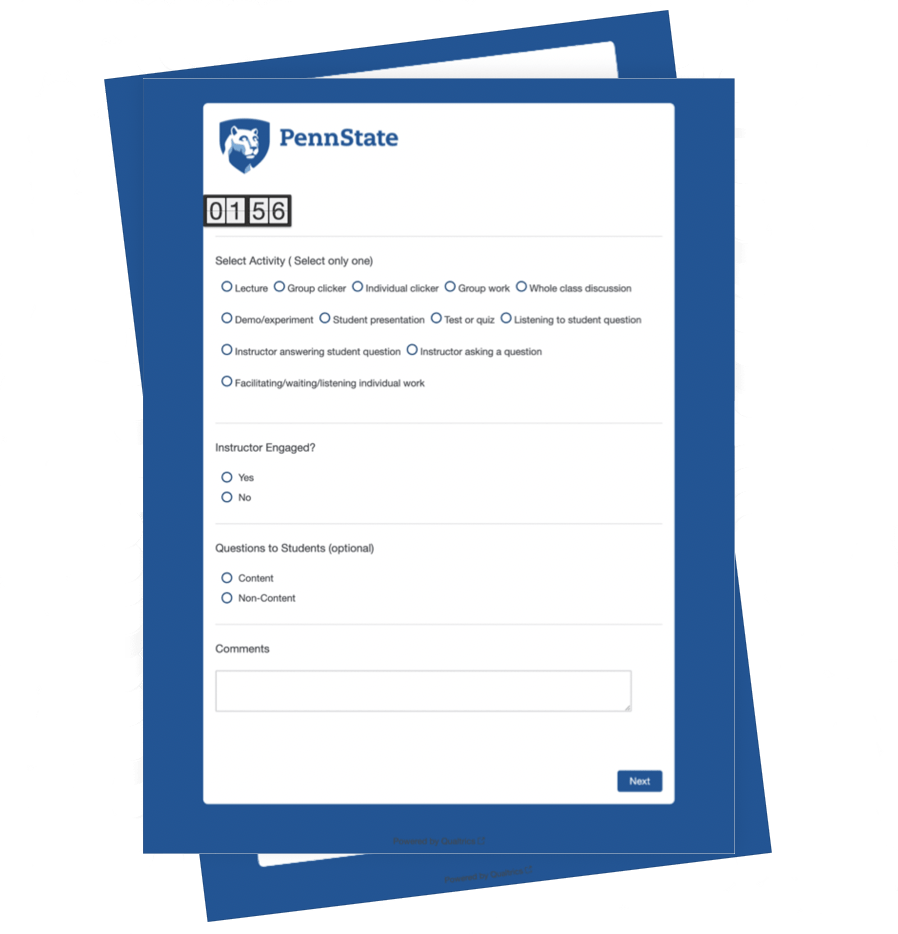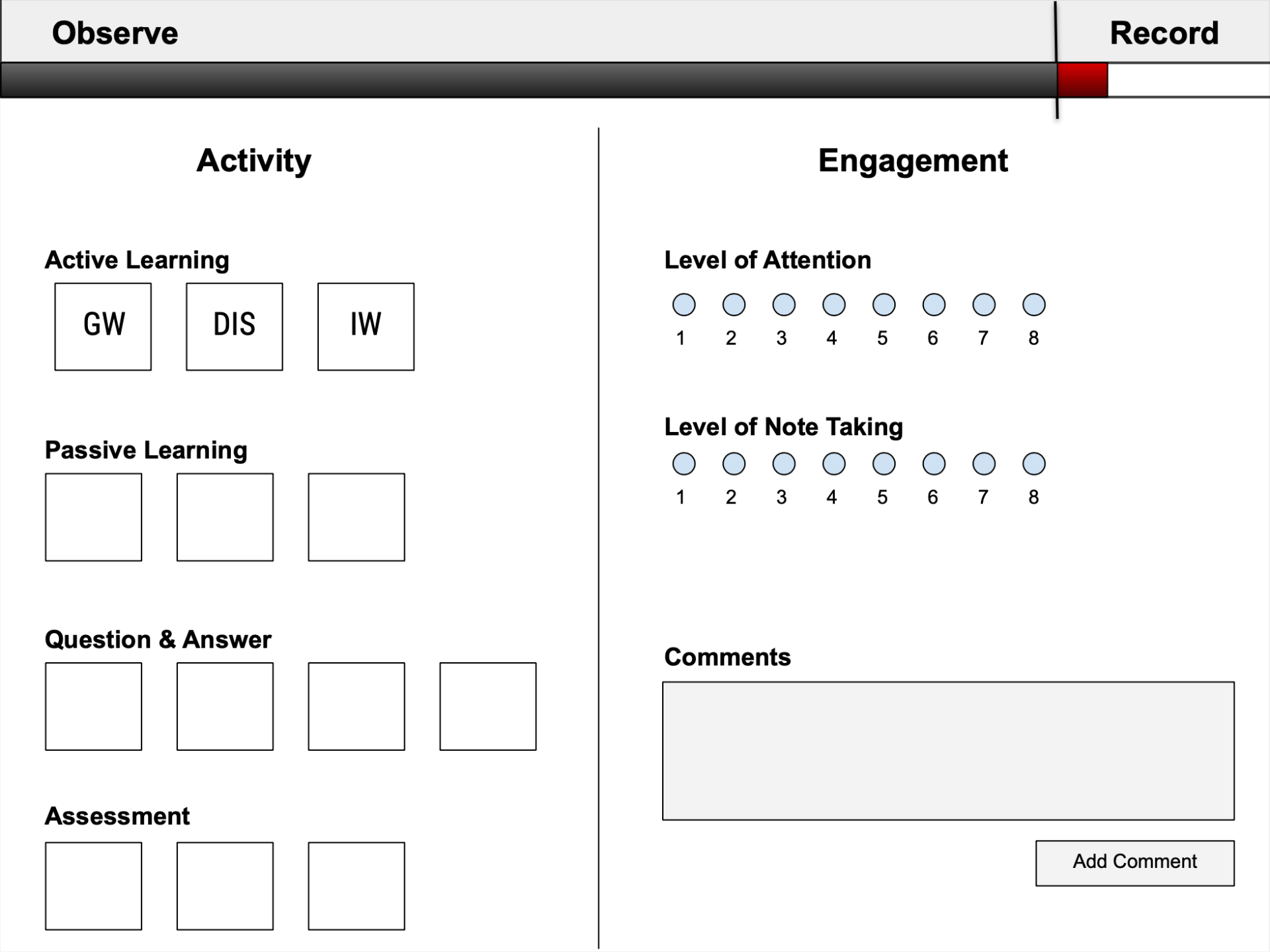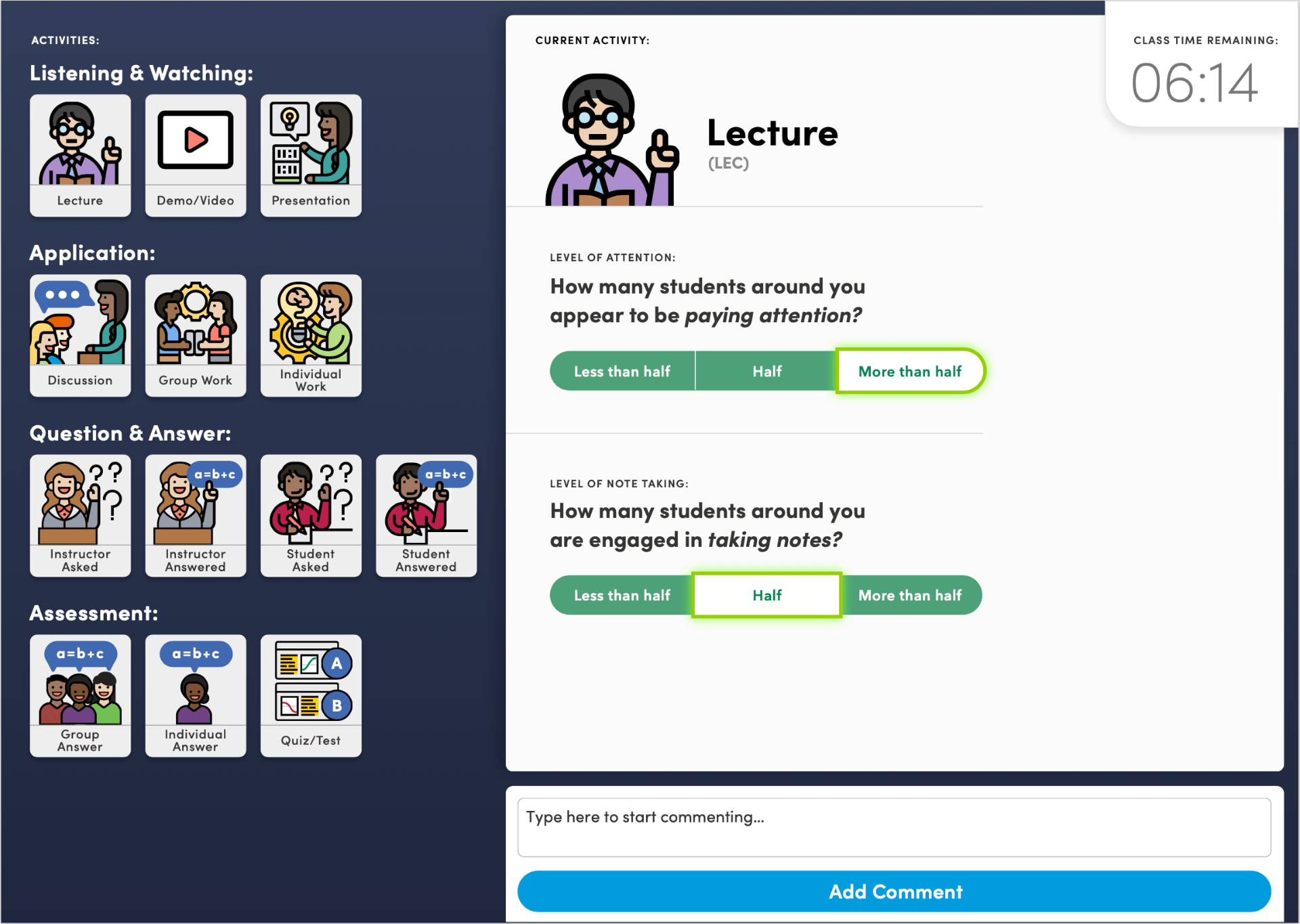cCEDIR — Classroom Observation Tool
Project Type
Application Development
Contributions
data collection, user journeys, workflow, wireframing, and interface design
Project Team
project manager, back-end developer, front-end developer, UX designer, visual designer
Challenge
Researchers had altered/adapted a survey tool to help collect observational data in a classroom environment but were hampered by the limitations of the original tool. The survey tool as it was being used was causing severe cognitive load for the observers, who missed new data in an effort to hurry to fill in text boxes with observational data before losing it every two minutes. TLT Studio was tasked with using this tool as a basis for building a web application tool to measure elements of active learning specific to lecture-format classes, using the COPUS observation protocol.

Solution
The user journeys, workflow, wireframing, and interface design was led by the UX designer, followed by front-end implementation by developers. The application is built on a Ruby-on-Rails framework to provide API, administrative, storage, and authentication functions. Vue, a javascript front-end framework, is utilized to capture real-time information an easy-to-use interface for browsers and tablets. The data collected and analyzed can provide valuable insights as to how an instructor can better utilize active learning in the classroom. It can also provide an instructor confirmation that they are putting active learning techniques into practice. This information is useful to an instructor’s professional development. The result of this process aligns directly with TLT’s mission to aid instructors with professional development through classroom technology. It also furthers a TLT research initiative exploring how pedagogical uses of technology, the technology itself, and learning spaces can influence student success.

Impact
- Replaced 2-minute marker with a timestream approach, allowing observers to collect data as it is observed which can then be normalized on the back end and sliced into any time increments desired.
- The previous interface would refresh even if the observer wasn’t finished recording data; the new interface reduces the stress associated with missing data, allowing an observer to focus on observing rather than recording.
- Replaced a written paragraph of activities with a panel of activity icons, grouped by type, allowing observers to quickly choose the correct activity being observed and record the relevant data.
- Data collection questions were only shown when the relevant activity was selected. This simplified interface allows observers to collect more relevant data per activity.
- Classroom timer to give context to classtime
- Added input question at end of class to record observations as to the class overall
- Streamlined faculty observations.


Our team came to Studio with an evolving vision for a classroom observation application. Of course this would require not just vision, but development and adoption. Robin has been an integral and impactful member of the team as our ever-vigilant UX-eye. At every turn, and with genuine enthusiasm for the project, she seeks to understand our vision; then she imagines how users will ultimately experience that vision. With her keen understanding and thoughtful probing, she has challenged us, not only with compelling questions but, with creative solutions. All of this has been central to the development of a tool that already exceeds our expectations. We are still in development, but with adoption on the horizon, I have every confidence that Robin’s role in this project will have helped to ensure that our users will have the best experience possible. I could not be more grateful for Robin’s contributions to our team.